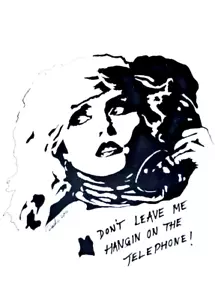The Book of Immersion began in the hush of lockdown, dreamt up as a musical that’s still playing on loop in my head. I see it vividly—characters leaping, dancing, jamming in a band that never sleeps. That band, Tale Teller Club, became the heart of the whole project, a vessel for the novel’s characters to live, breathe, and perform.
At the core are Flex and iServalan, the lead figures in the story—although iServalan doesn't even make her entrance until the final pages of Volume 1. And then there’s Vapor Punk, the narrator. Each chapter, or “strata,” begins with their musings on the peculiarities of humans and machines, offering a strange, thoughtful lens through which the story unfolds.
During those quiet, uncertain months, I seized the chance to dive deep into sci-fi fantasy and weave music directly into the bones of the book. Sometimes it worked; often it didn’t. I envisioned a digital dreamscape—audio, visuals, emotions colliding to create a total sensory experience. I wanted the reader, or viewer, or listener, to fall in.
But after a few years of experimenting, I realized something profound: writers have always done that. When we read, we hear the characters. We sense the sound of the setting, the rhythm of a scene. There’s already a narrator in our heads, whispering or shouting depending on the story. I asked myself, “Do I really need all this singing and dancing?”
Animating even short chapters was a time sink. AI didn’t solve it—it made things more expensive and creatively flat. And those streaming sites? Overpriced and empty of real benefit. I felt like I was hitting the project with a sledgehammer when all I needed was a chisel—and some historical perspective.
Still, I couldn’t quite let go. I’m a musician. Audio-visual storytelling runs in my veins. The characters from the book weren’t just figments; they were performers in the Tale Teller Club’s electric orchestra. I gave them android voices through carefully chosen plugins. Each one had a signature sound, a sonic identity I refused to water down. Meanwhile, the music itself was evolving—becoming more cerebral, more experimental, exploring things like binaural beats and vagal stimulation.
Now, three years on, the time has come. The words—just the words—are ready. The Book of Immersion, Volume 1 will be published this April as a traditional book. But I haven’t abandoned the immersive dream. An interactive PDF is on the way, combining text, audio, film, and art into one cohesive experience. It’s a quieter, smarter solution—the very thing I was reaching for back when I was drowning in 3D apps.
There’s also a coffee table edition for art lovers, packed with illustrations and film stills. And if you’re curious to dip in, you can read the individual chapters (or "strata") for free on Kindle.
This is only the beginning.
Sarnia de la Maré FRSA







































































